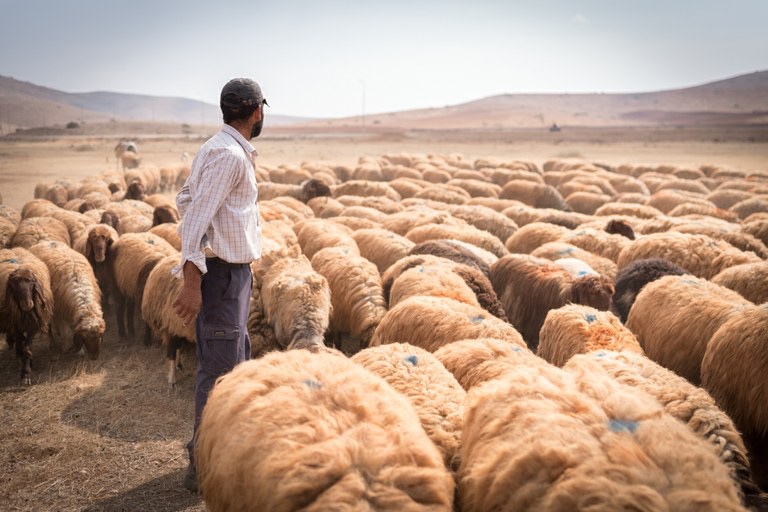
ALBIN HILLERT, in an article first published on the World Council of Churches website, reports on the work of ecumenical accompaniers…
”10 minutes is the rule, so you make a lot of noise in your room at 5.50 if the other EA isn’t up.”
Shepherding is early morning business, and international accompaniers from the World Council of Churches’ Ecumenical Accompaniment Programme in Palestine and Israel (WCC-EAPPI) play a particular role, as they offer protective presence to Palestinian communities on the West Bank.
A group of ecumenical accompaniers stationed in Jericho explain that they accompany communities up north, in the Jordan Valley, where Bedouins struggle to maintain access to their lands.
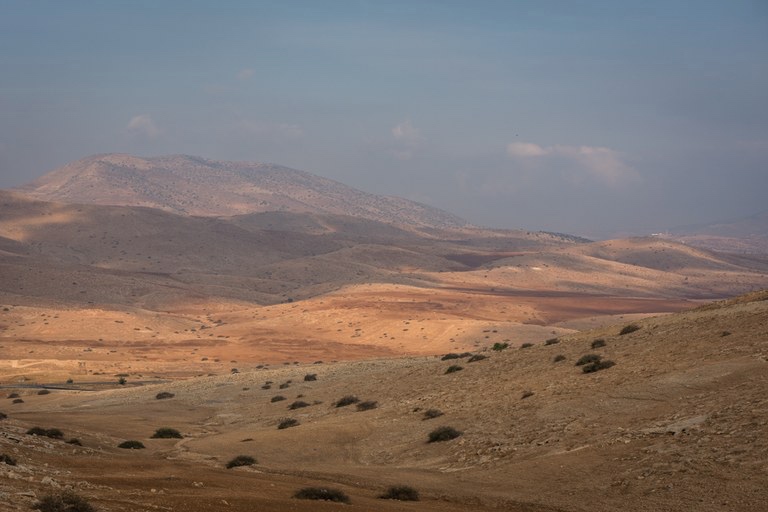
The Jordan Valley is anything but lush. While July and August are the hottest, still in October temperatures rise daily to 35-plus degrees, and the hot sun leaves little if any water for rivers or creeks to form.
Yet with the exception of the hottest weeks of the year, the valley does provide enough for goats and sheep to graze.

A flock of 500 sheep move across a field in the Jordan Valley. The valley has long been the home of Bedouins, but with Israeli authorities threatening to demolish their homes, and the continued expansion of Israeli settlements in the area, many now find themselves with ever-shrinking living space.
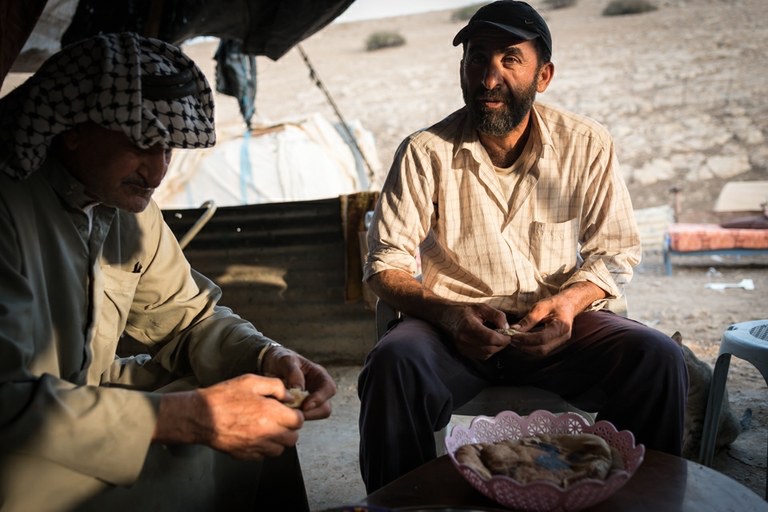
“When we go down they say ‘go up’, when we go up they say ‘go down’, when we go south they say ‘go north’. We don’t know where to go,” explain Deab Abu Malik (above right) and Abu Okab (above left) as the EAs arrive in their small community in the morning.
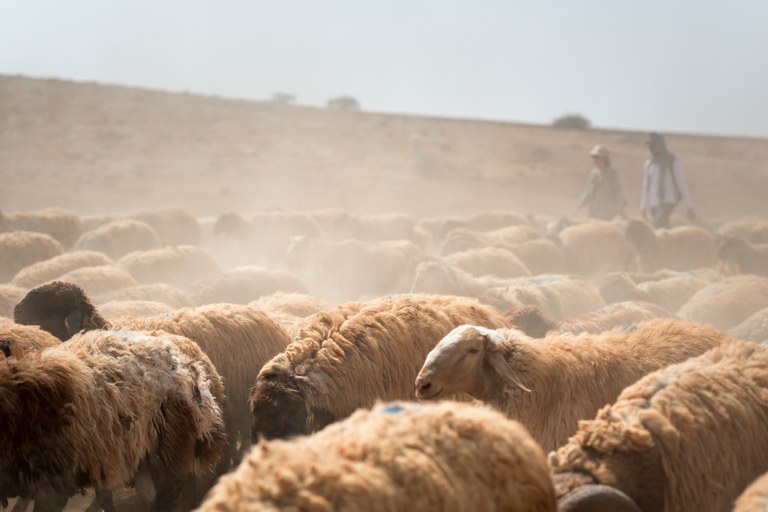
EAs accompany shepherds in many parts of the West Bank, thereby providing an international presence known to have a mitigating effect on confrontations between Israeli settlers and the Palestinians. EA’s presence helps Palestinians access lands they otherwise might not have dared to continue to cultivate.
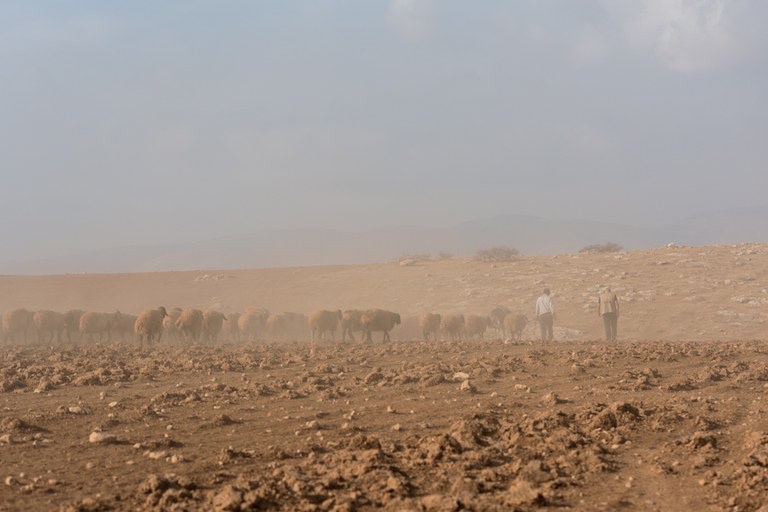
In the West Bank’s Area C, any land that isn’t cultivated for a period of three years becomes property of the state, the shepherds explain, so accessing their lands regularly is vital for the communities and their herds.
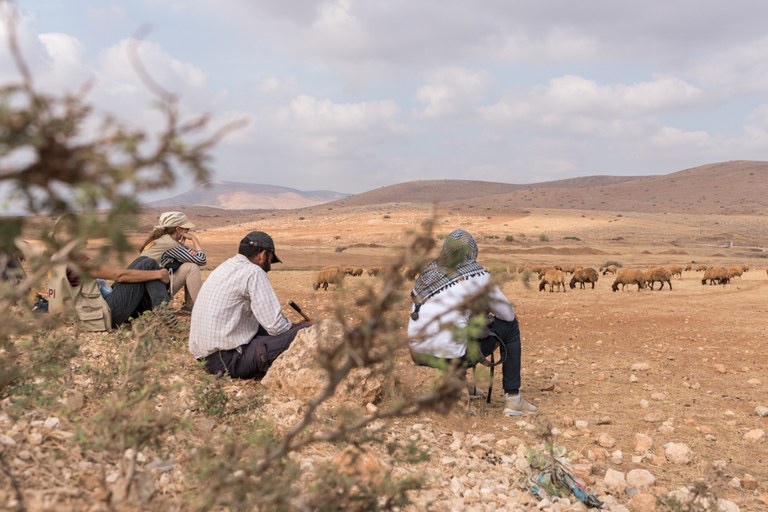
As the sheep reach their feeding ground, the pace slows down and their shepherd can stop to rest for a moment as they graze calmly across the field.
“Somehow, I feel that with the shepherding, we have such an immediate impact,” one of the EAs says. “But it’s also tense, and if there is a confrontation with a settler, it can be scary for us too. So even when the pace is low and the sheep are grazing, I find myself turning around for every car I hear approaching.”

Deab looks on as an Israeli settler drives by on a motorbike, wondering if they will stop to raise dust over the Bedouins’ presence.
While the situation varies between the many locations where EAs are present, they remain acutely aware that theirs is a witness of a conflict zone, where commotion or outright violence could erupt on short notice.
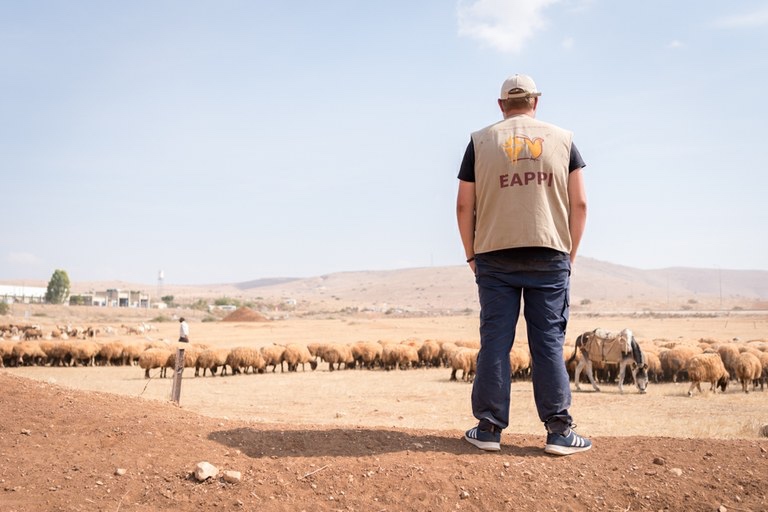
“If there is a confrontation, we will make sure we are visible, but we do not interact with settlers or soldiers unless someone directly asks us a question,” an EA explains. “We are here, we see, and we document, and we often notice that it has a calming effect on the situations.”
“At the same time,” another EA adds, “it seems so easy to start to think that one group is always doing bad things. But not everyone, on either side, is always so ideological. So it’s important that we as an international presence are careful with how we act and interact. For example, it has happened sometimes that we meet Israeli settlers incidentally, not because they are there to confront anyone, but just coincidentally. In this kind of situation, it is important that we do not react by being hostile, so we risk causing even more tensions.”
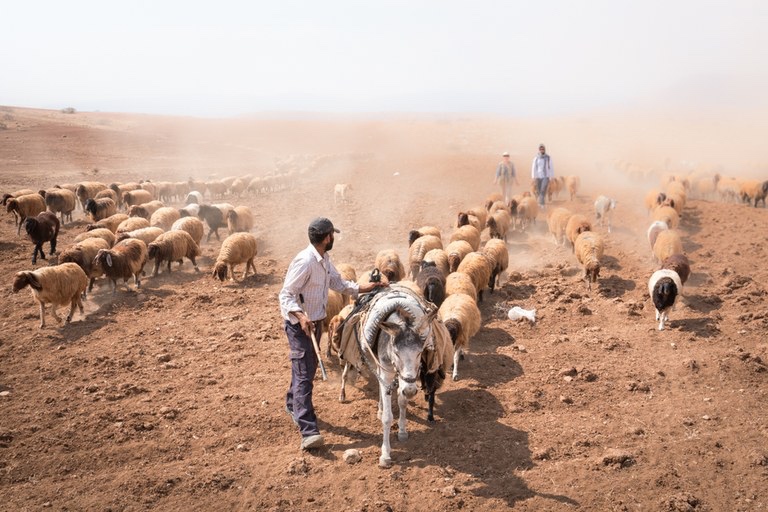
After the morning’s graze, Deab leads his flock of sheep homeward. The pace is carefully monitored, with regular stops for moments of rest. He says it’s important the sheep do not burn too quickly the nutrition they’ve just picked up.
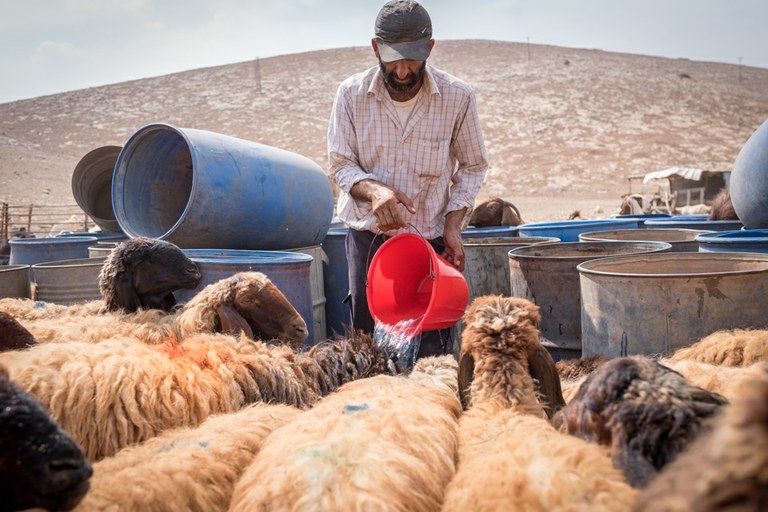
Once back home, the sheep receive a well-needed drink before they lay to rest in the shade.
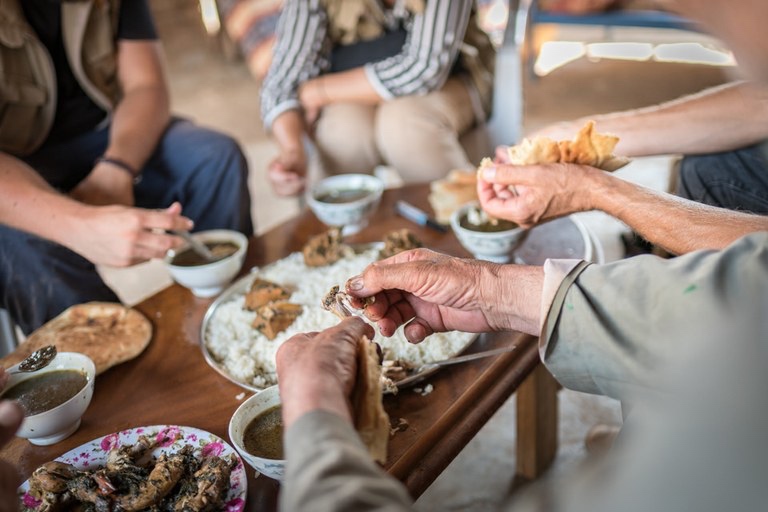
A simple meal then closes the visit of the EAs to the community this particular day, as a gesture of hospitality, and a sign of appreciation for the presence and protection they provide to the community.
Albin Hillert is communication officer for the World Council of Churches





